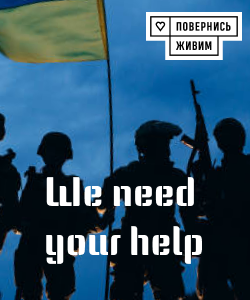After the Russian military announced a “Easter ceasefire,” Ukrainian forces report a stable yet tense escalation on the front line
This was stated by President Volodymyr Zelensky following a briefing from the Commander-in-Chief of the Armed Forces of Ukraine, Oleksandr Syrskyi. In his speech, he emphasized that the so-called "ceasefire," proclaimed by Moscow ahead of Easter, does not extend to the Ukrainian-Russian borders, specifically the Kursk and Belgorod regions of the Russian Federation, where shelling continues to be at the center of tension. The head of state stressed that Russia continues active combat operations in certain sectors of the front. "The Commander-in-Chief's report reflects the true picture of the situation: hostilities are ongoing, and shelling and drone attacks by Russian forces persist. Despite statements about a ceasefire, the Russians continue to use artillery and tactical strike means, including kamikaze drones," Zelensky said in his Facebook post. The President underlined that the Ukrainian Armed Forces will respond in kind and take similar measures. "We are trying to reduce escalation, but we will not deviate from our principle of mirror responses to any provocations to defend our country and its citizens," he added. Another important detail is the expectation of updated information regarding the situation at the front, which is scheduled to arrive from military units at midnight. Zelensky also noted that Ukrainian troops will remain vigilant and will not allow the enemy to occupy positions, as has been recorded during the period of active armed activity. The background to this tense situation stems from Moscow’s words about an allegedly "Easter ceasefire" announced by Vladimir Putin on April 19. According to him, this pause in hostilities would last from the evening of April 19 until midnight on April 21 and was intended to cover the entire conflict zone. The eighteen-month ceasefire regime is officially supported by the Russian Ministry of Defense, contingent on mutual adherence to agreements by Kyiv, which has raised skepticism in Kyiv and the international community. Ukraine, for its part, has responsibly stated its position, asserting that it will respond mirror-like to any aggressive actions by Russia, regardless of the announced "ceasefire." However, the current situation shows otherwise — fighting continues in several sectors of the front, and the use of artillery, drones, and offensive means remains routine practice for Russian occupiers. According to the monitoring project DeepState, during the so-called "Easter ceasefire," Ukrainian military personnel did not perceive significant changes in the nature of the confrontation. On the contrary, enemy activity remained high. Representatives of local administrations, including the head of the Kherson regional military administration, Oleksandr Prokudin, reported ongoing drone attacks on the region, even after the declared ceasefire period. For example, in the night of April 19, a man was injured in the village of Prymorske, Zaporizhzhia region, as a result of a Russian drone attack, confirmed by local sources. This once again demonstrates that any promises of "peace" and ceasefires continue to be mere declarations by Russian leadership, while hostilities and the ongoing threat to civilians persist. It is becoming increasingly clear that there is no "ceasefire" on the front — Ukrainian forces remain determined to repel aggression and continue acting based on the evolving situation. In these difficult times, every element of the war remains relevant—from active resistance to diplomatic efforts within international institutions to strengthen Ukraine’s position and ensure its sovereignty and security.

